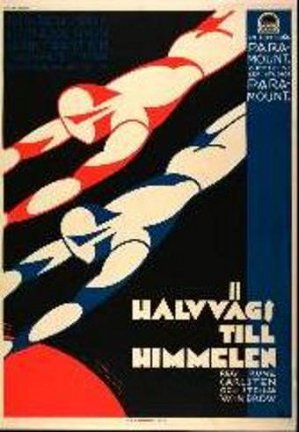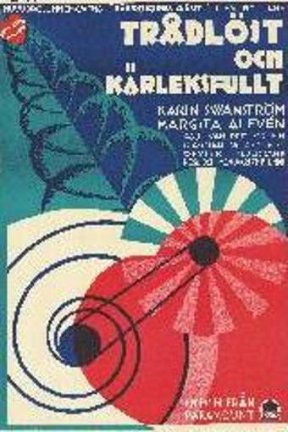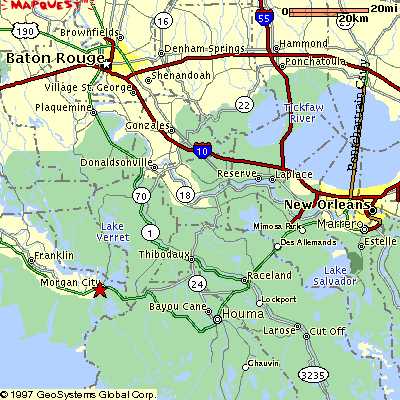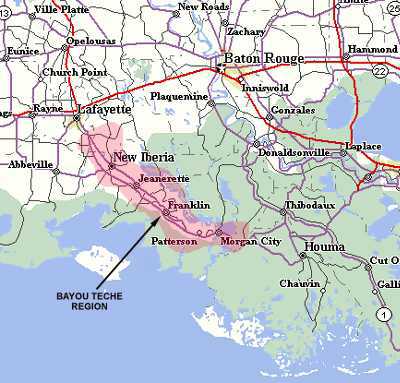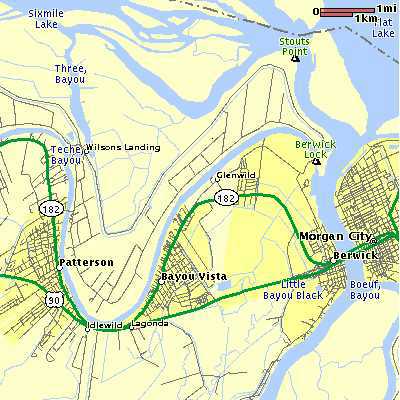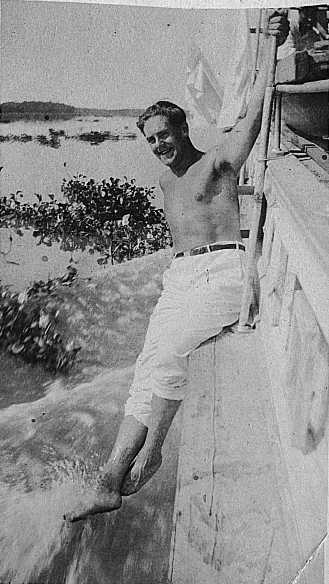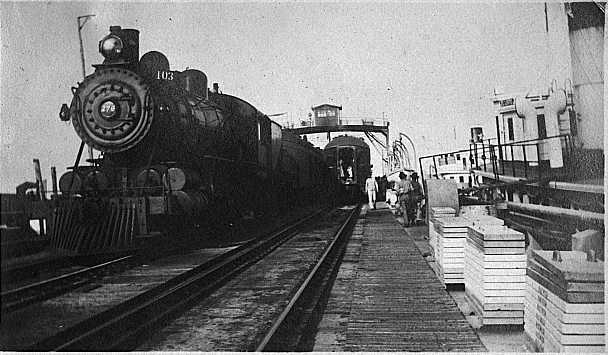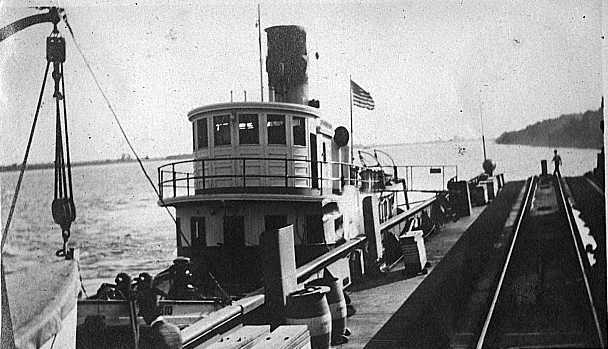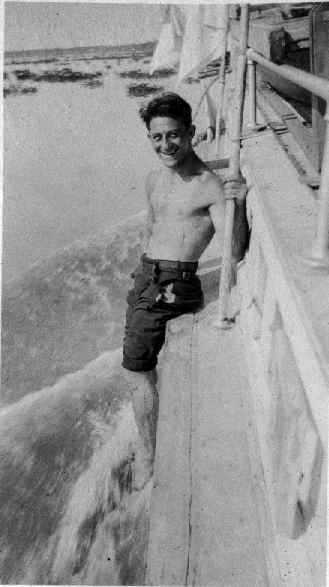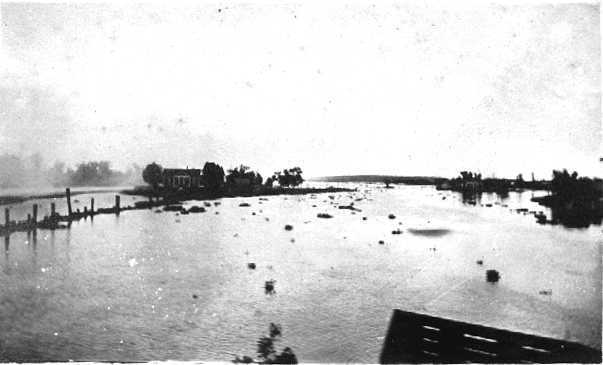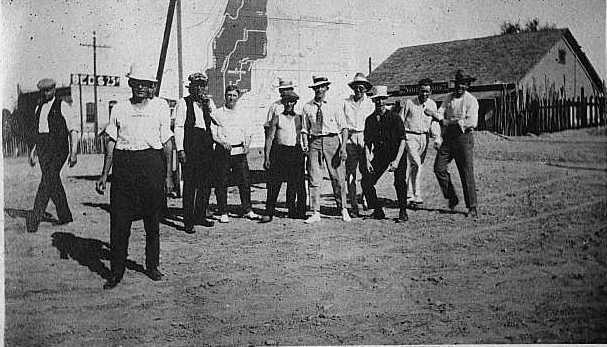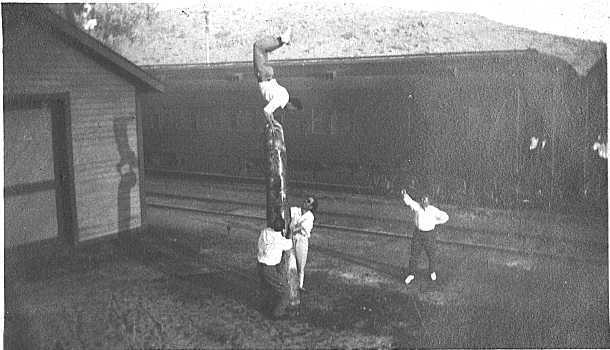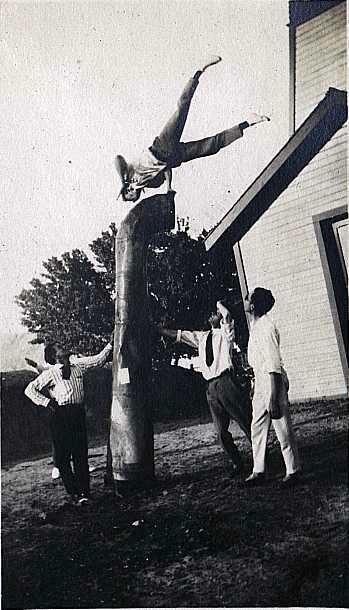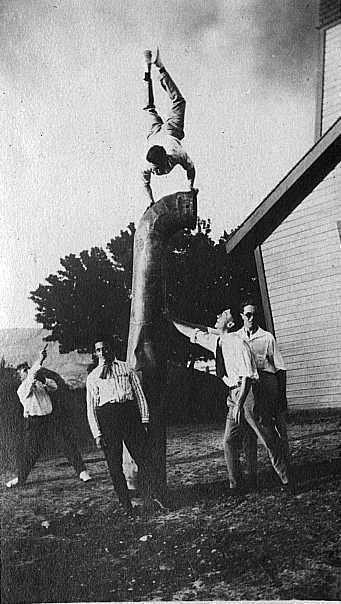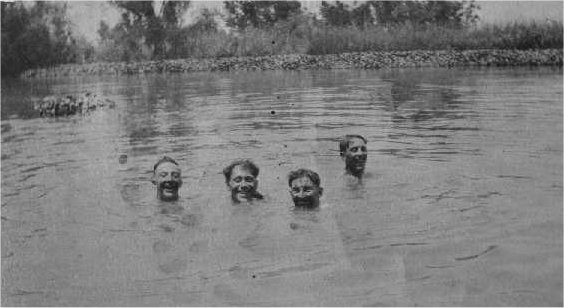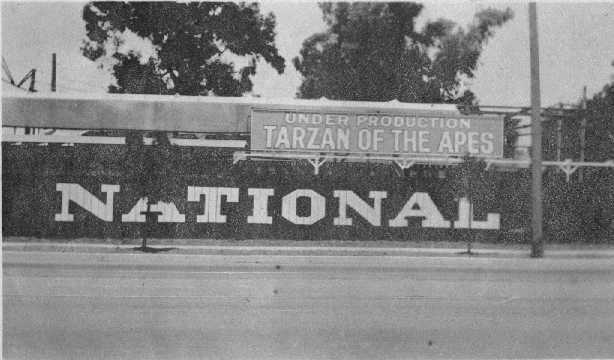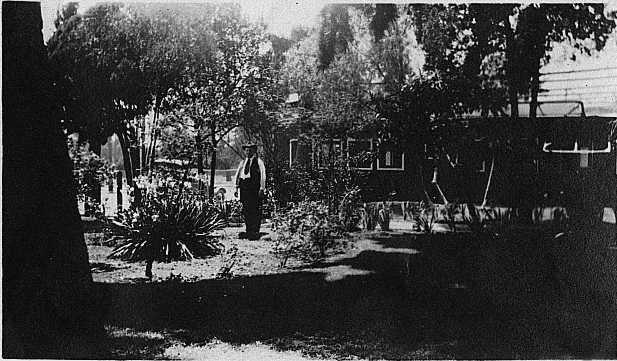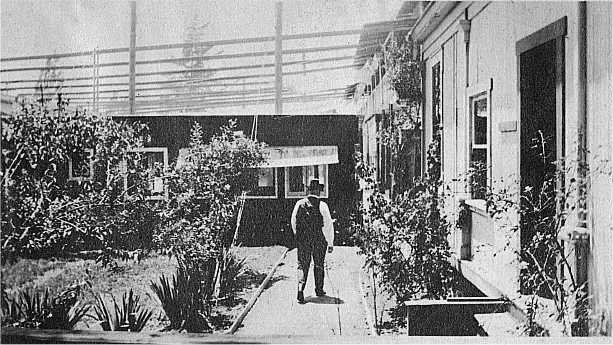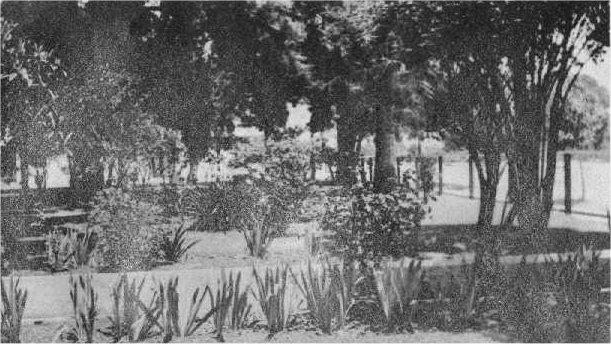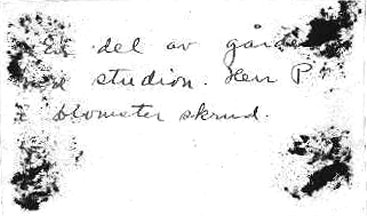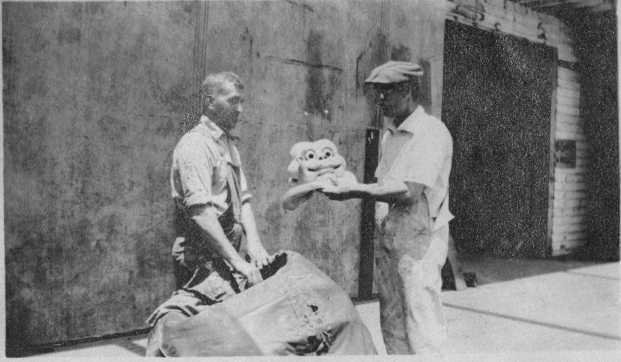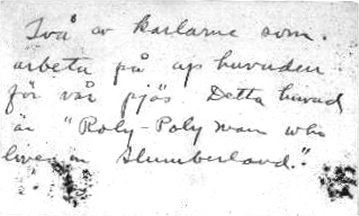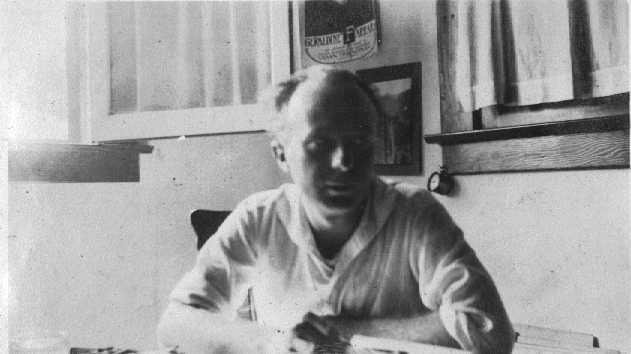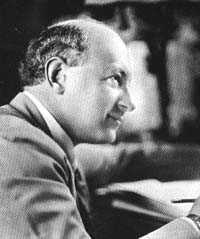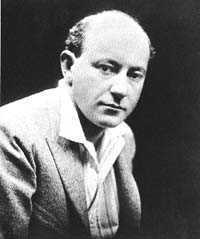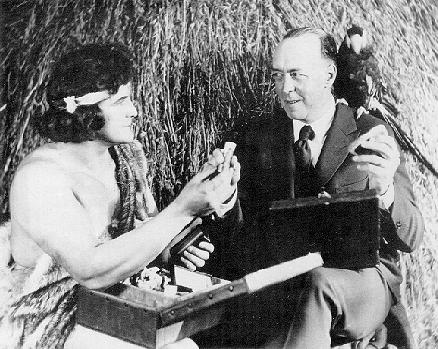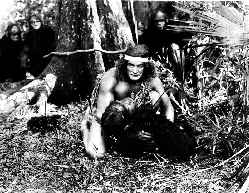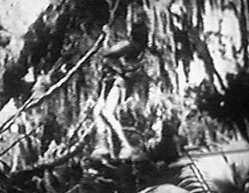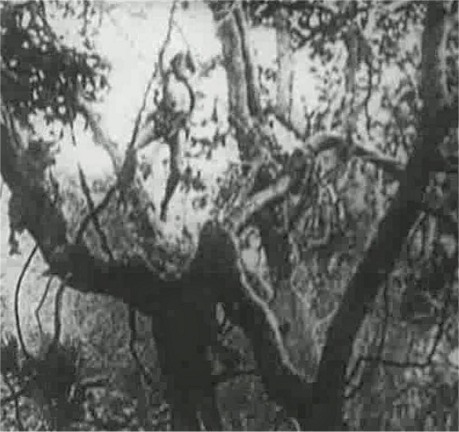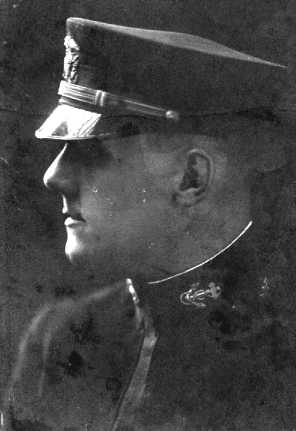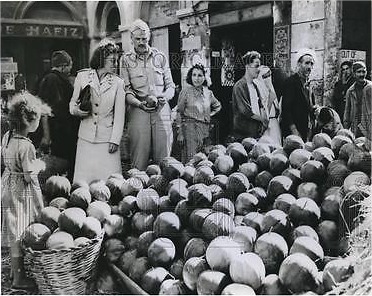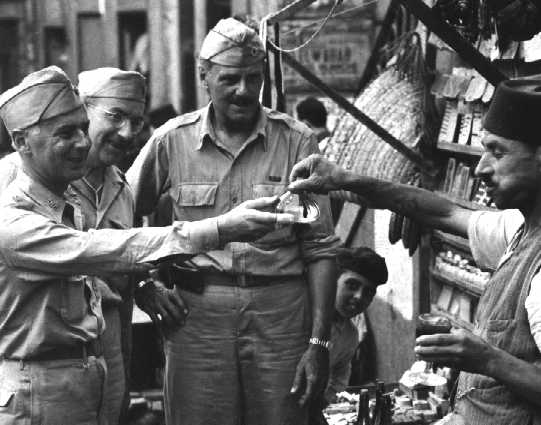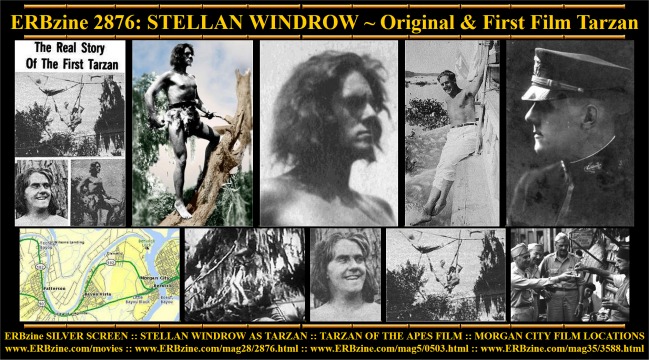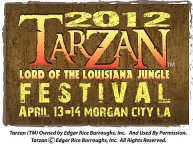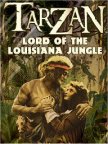MOTION PICTURE NEWS
August 4, 1917
On August 11, 1917, Moving Picture World reported that
the National Film's Los Angeles studio "is preparing for the production
of Tarzan of the Apes and is making ape costumes." Director Scott
Sidney started filming "Tarzan of the Apes" on a barren California desert.
After only two days of shooting, however, they decided to move the project
to Louisiana's Bayou Teche, to match stock jungle footage from Brazil.
A special five-car train hauled Company executives, cast,
crew and equipment the four days' journey to Tarzan's "jungle" near Morgan
City, Louisiana. On the way Stellan (often called "Steamship" Windrow due
to his use of the name S. S. Windrow - and as "Ukulele Swede" because he
accompanied his multi-lingual singing with that instrument) trained with
the professional acrobatic team of DeGarro and DeComa.
Shooting began August 14, 1917. The troupe arose at 4:30
am, had breakfast, then took a small steamboat to nearby Bayou Teche to
begin filming at 6:00. They worked until 9:30, breaking for lunch and –
because of the intense heat – not returning to filming until 3:00 pm, continuing
then until 6:00.
The heat meant that those performing as apes could only
work for a minute, then snatch off their masks to gasp for breath. In addition
to the heat there were chiggers, red bugs, wasps, aligators, snakes, lizards,
flies and mosquitoes. Stellan used a ground level trampoline to make fourteen
foot leaps into the trees, there to execute death-defying swings in the
tree tops over sharp boulders on slippery hemp hawsers constructed to resemble
natural vines.
Stellan leaves Tarzan, joins the Navy
After five weeks of shooting, the treetop work nearly
completed, his country called Stellan Windrow to World War I, in which
he served as an ensign in the Navy. National Film paid him $1000 for his
film rights, meaning he would not be credited in the film. A frantic search
began for his replacement, ending a few weeks later when D.W. Griffith
discovery Elmo Lincoln arrived from Los Angeles. His stocky five-foot,
eleven-inch, 200-pound frame, together with his fear of heights, kept Lincoln
from doing any tree-work. As a result the final movie shows two Tarzans
— the limber, athletic Stellan-Tarzan flying through the jungle canopy,
barrel-chested Elmo-Tarzan fighting lions and other hostiles on the ground.
On December 2, dissatisfied with the motion picture industry
and the progress made on adapting his writings, Edgar Rice Burroughs dumped
his shares of capital stock in National Film. January 16, 1919, the Company
invited Burroughs to the January 27 premiere of Tarzan of the Apes, but
he declined. Stellan attended the Broadway opening, sitting in William
Parsons' box. The eight-reel movie became one of the first movies to gross
over one million dollars.
The New York Times, February 3, 1918, reported that the
production had used 60 ape suits, 1100 native extras, 40 aerial acrobats,
four lions, six tigers, several elephants, and 18 apes.
Stellan after Tarzan
Later in 1918, in London, Stellan married Marjorie Desborough
(born May 7, 1895 in London). They returned to the United States prior
to 1920 when their daughter Marjorie Ann (Midge) Windrow was born. They
returned to Europe as a result of a job offer from Wahl-Eversharp (fountain
pen company). Their second daughter Patricia was born in London in 1923.
He left Eversharp to work for Paramount Pictures, Swedish Division (dubbing,
as well as playing bit parts in numerous movies), moving in 1923 to LeVesinet,
a suburb of Paris, working at the film studio in another suburb, Joinville.
They remained through the 1930s, both girls educated in French schools.
Toward the end of the decade Stellan returned to the United
States where he did some work as a freelance newspaper/magazine photographer
and became a partner in the firm of Underwood & Underwood Studios (NYC).
After some delay, hoping to be able to remain in Paris but mindful of the
changes taking place in Europe, Marjorie and their daughters also returned
to the U.S. During World War II he served in North Africa with the American
Red Cross, staying with the ARC as a photographer after the war. Stellan
died of "hardening of the arteries" November 25, 1958 in New York.
Stellan's wife died at the Babylon, New York, home of
her daughter Marjorie, October of 1967. Marjorie, born January 6, 1920,
passed away January 13, 1999. Her sons are Robin (Bob) Stephens, Paul Wormser
and Peter Wormser. Stellan's second daughter Patricia Windrow-Klein, born
September 12, 1923, is the mother of Kenneth (Ken) Perez, Adam Klein, and
Lawrence (Moondi) Klein.

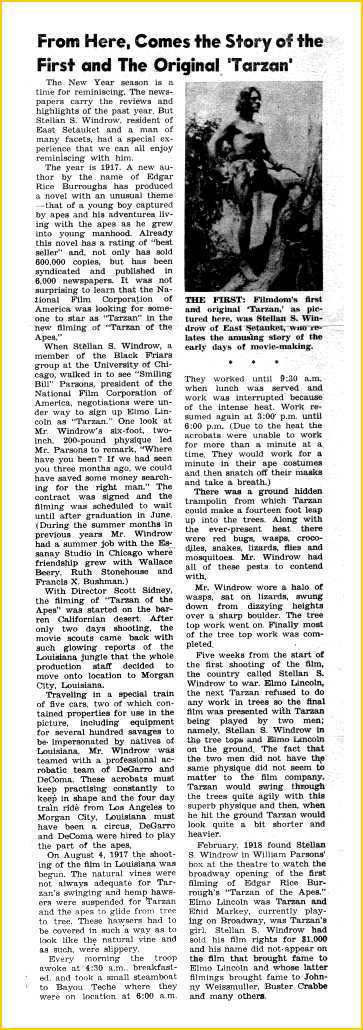
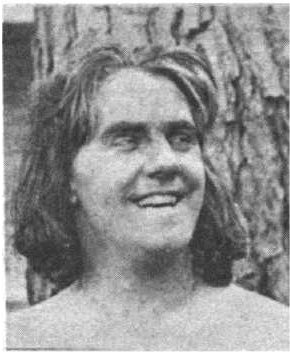
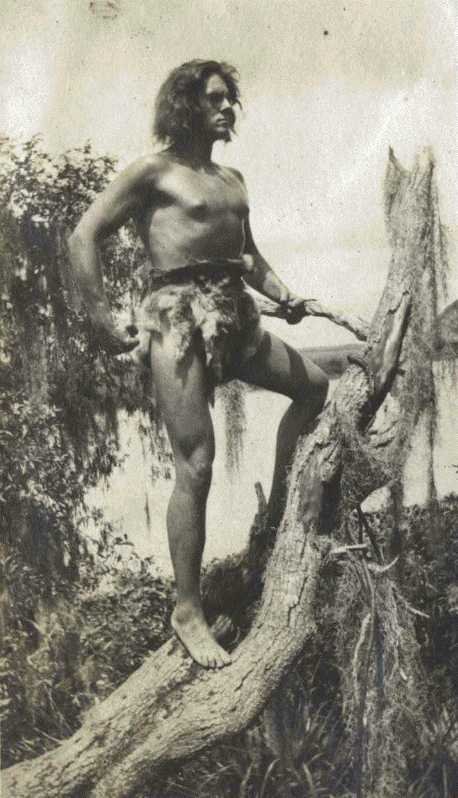
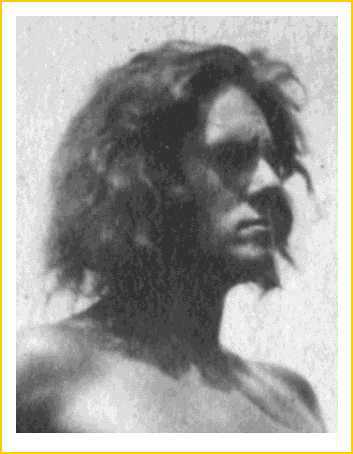

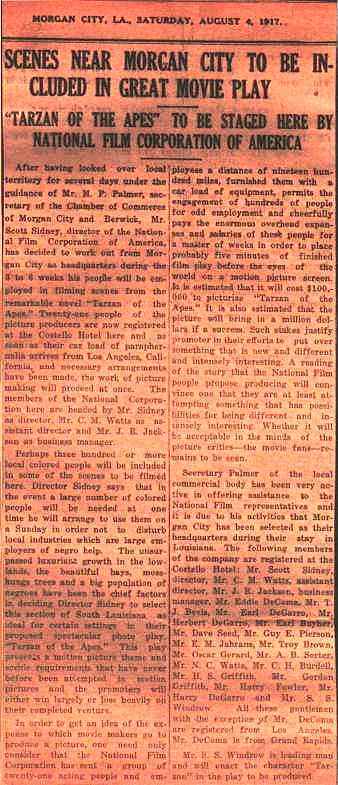
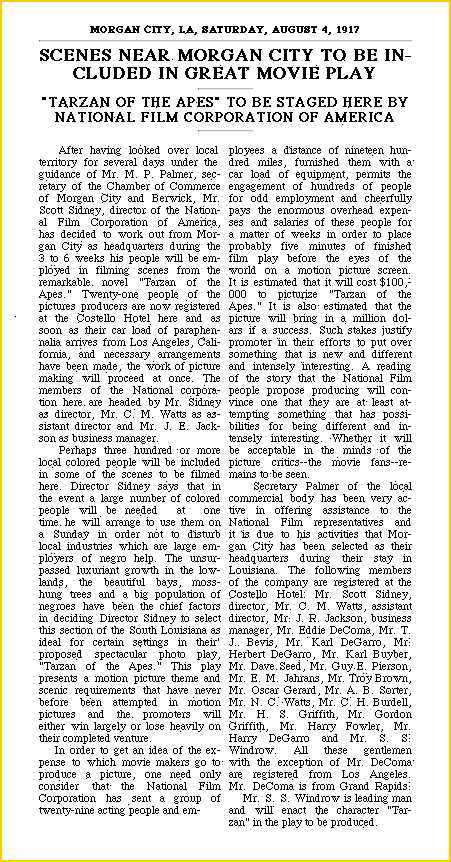
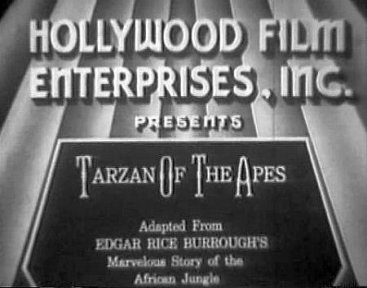
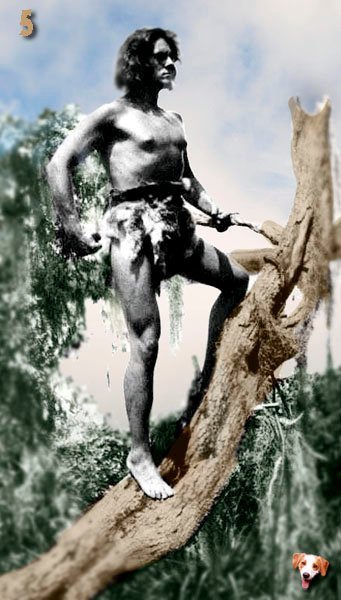 Elmo
Lincoln is generally thought to be the first movie Tarzan because he starred
in the earliest of the Tarzan movies, Tarzan of the Apes, released
in 1918. An argument could also be made that the honor should go to Gordon
Griffith, the twelve-year-old boy who played Tarzan as a youth, for approximately
the first third of the movie. It is not generally known, however, that
the man first contracted to play the movie role of Tarzan, and the first
to actually be filmed in the part, was Stellan Sven Windrow of Chicago.
Elmo
Lincoln is generally thought to be the first movie Tarzan because he starred
in the earliest of the Tarzan movies, Tarzan of the Apes, released
in 1918. An argument could also be made that the honor should go to Gordon
Griffith, the twelve-year-old boy who played Tarzan as a youth, for approximately
the first third of the movie. It is not generally known, however, that
the man first contracted to play the movie role of Tarzan, and the first
to actually be filmed in the part, was Stellan Sven Windrow of Chicago.
